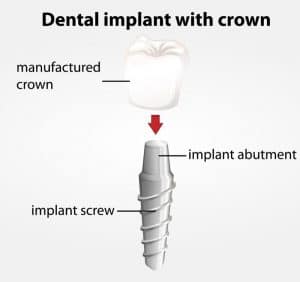 Did you know that implants date back 4000 years? In ancient China, carved bamboo pegs were used to replace missing teeth. Implants were used in several different ancient cultures, but the modern implant procedure that we use today was actually stumbled upon by accident. Implants are the most advanced and long-lasting tooth replacement procedure available, because implants replace your natural tooth root, which makes implants as long-lasting and stable as your natural teeth.
Did you know that implants date back 4000 years? In ancient China, carved bamboo pegs were used to replace missing teeth. Implants were used in several different ancient cultures, but the modern implant procedure that we use today was actually stumbled upon by accident. Implants are the most advanced and long-lasting tooth replacement procedure available, because implants replace your natural tooth root, which makes implants as long-lasting and stable as your natural teeth.
A Brief History
Although the idea of implants was discovered thousands of years earlier, it wasn’t until the eighteenth century that researchers began looking for an implant solution in earnest. The issue regarding implant placement is that the body and the bone reject foreign bodies. A material that the body does not reject and which will osseointegrate (integrate with the bone itself becoming stable and firm) is what is required for successful implant placement. In 1952, an orthopedic surgeon accidentally discovered such a material: titanium. While studying the healing and regeneration of bone, he placed a titanium cylinder into a rabbit femur. Months later, when he went to remove it, it wouldn’t budge. The titanium cylinder and the bone had fused together. After years of further experimentation, the surgeon placed his first titanium dental implant into a live human volunteer in 1965.
The Implant
Since then, dental implants consist of placing a small titanium implant post into the jawbone. After four to six months the bone and post fuse together to become one, simulating the dental root. After osseointegration is complete, the implant post is topped with a porcelain crown and your smile is restored. However, candidates for dental implants must have a healthy, strong underlying jawbone for implant placement to be successful. If you have jawbone atrophy, tooth decay, or periodontal disease, these issues will have to be tended to before implant placement is recommended.




Recent Comments